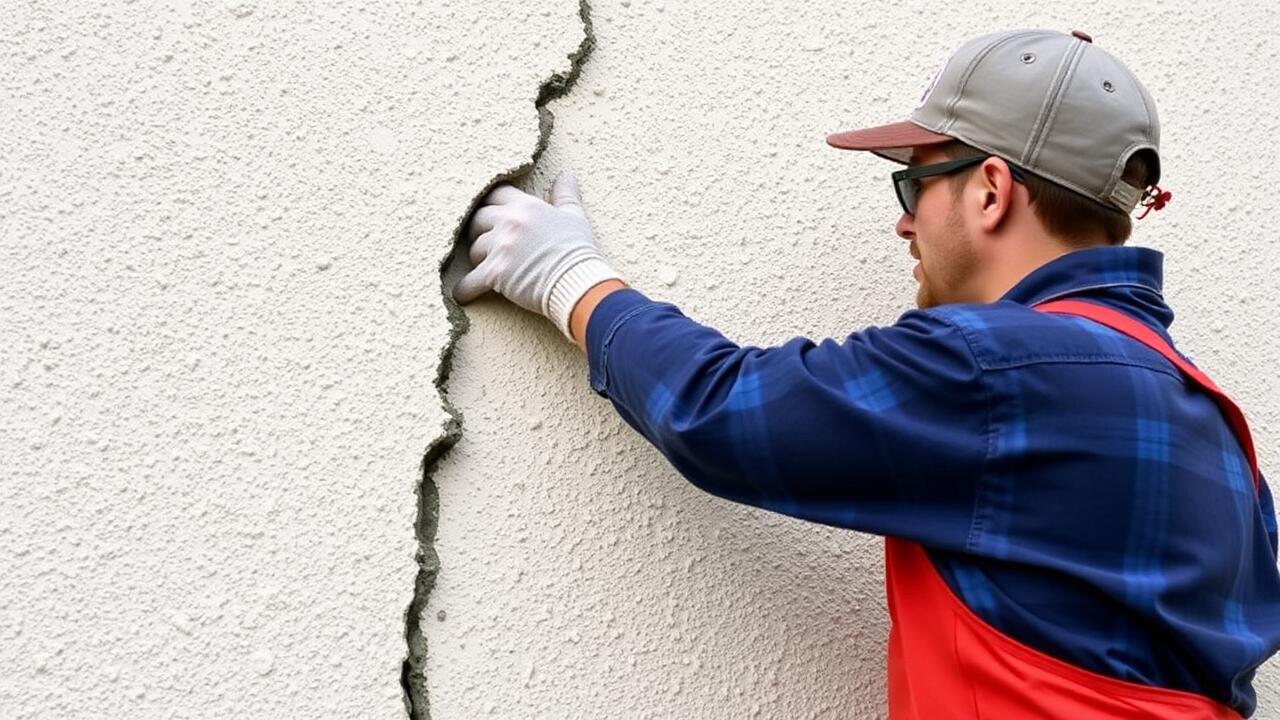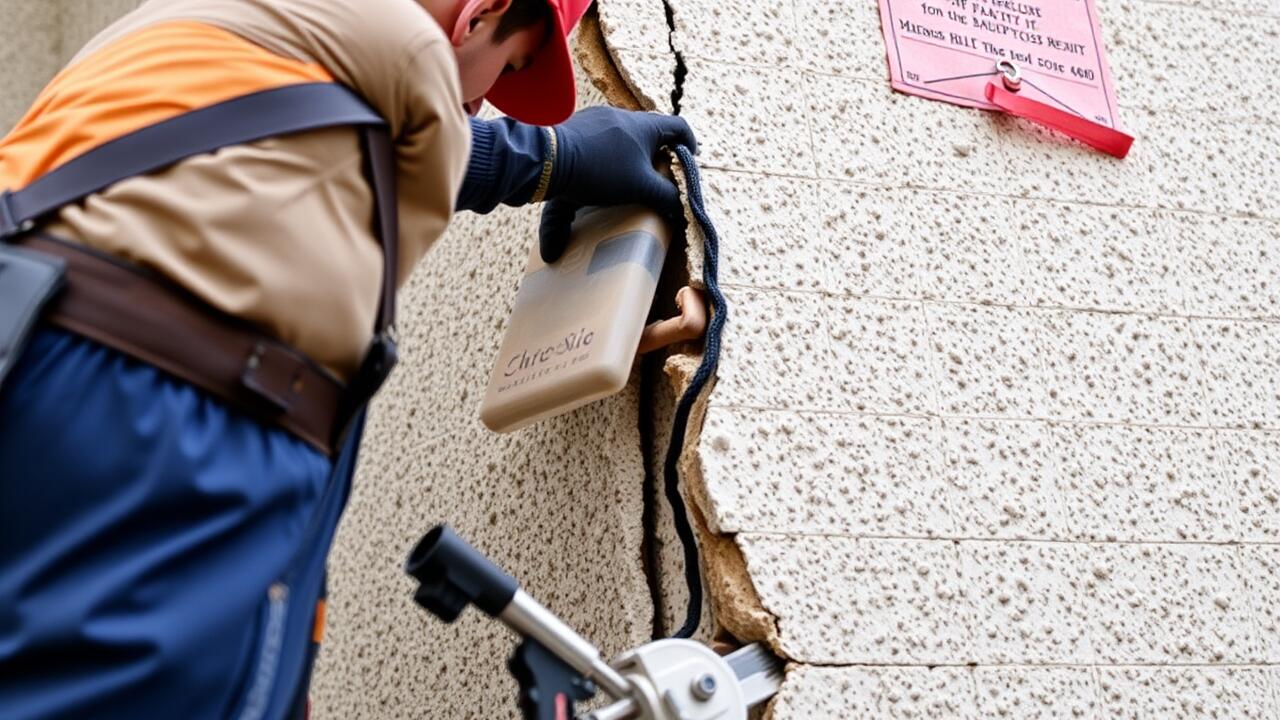
Mixing the Repair Compound
To effectively repair stucco walls, mixing the right repair compound is essential. Start by selecting a pre-mixed stucco repair product or a basic mixture of portland cement, sand, and water. The proportions typically follow a standard ratio, such as one part cement to three parts sand. Gradually add water while stirring to reach a workable consistency. Ensure the mixture is neither too runny nor too thick; it should hold its shape yet be easy to apply.
When considering options for repairing your stucco walls, it's beneficial to explore local services. For instance, residents seeking expert assistance might consider "Stucco Crack Repair in North Hollywood, Los Angeles." Not only do professionals have access to high-quality materials, but they also possess the expertise to achieve a durable and long-lasting finish, making the entire process much smoother and more efficient.
Tips for Achieving the Right Consistency
Achieving the right consistency for your repair compound is crucial for a successful stucco patch. Start by carefully following the manufacturer's instructions for mixing ratios. It’s best to use clean tools and a reliable mixing container to ensure an even blend. Gradually add water to the stucco mix while stirring until you get a creamy texture. The goal is to avoid clumps that can affect the final finish. For popular areas like West Adams in Los Angeles, consider practicing a small batch first. This will help you gauge the appropriate thickness needed for the specific repair.
The ideal mixture should be workable but firm enough to hold its shape when applied. Make adjustments slowly, incorporating small amounts of water or dry mixture until you reach optimum consistency. If too watery, the compound may sag or crack during application. When repairing stucco walls, it's important to pay attention to the consistency, especially in a region like West Adams, where climate factors can influence the drying process. Properly mixed repair material will ensure a durable and aesthetically pleasing finish.
Applying the Repair Material
Before applying the repair material, ensure the surface is clean and free of dust or debris. This preparation step is crucial for proper adhesion. Use a trowel to apply the mixture to the damaged area. Press the compound firmly into any cracks or holes to ensure it fills the space adequately. Smooth the surface with the trowel, working from the center of the repair outward to blend it with the existing stucco.
For those considering a DIY approach, researching local service options like "Stucco Crack Repair in Westlake, Los Angeles" can provide additional insight. It may help to practice your technique on a scrap piece of material before tackling the wall. This way, you can develop confidence in your skills. Pay careful attention to the application technique; a consistent motion will contribute to a more uniform finish.
Techniques for a Smooth Finish
Achieving a smooth finish on repaired stucco walls requires a few key techniques. Start by using a trowel to apply the repair compound evenly, ensuring that you fill in any cracks or indentations. Work in small sections to maintain control over the material and prevent it from drying out unevenly. After applying, level the compound to match the surrounding area. A light touch will help avoid overworking the material, which can lead to an uneven surface.
Once the initial layer is applied, it’s essential to feather the edges to create a seamless transition. Use a damp sponge or a fine-grit sanding pad to soften the edges of the repair while the compound is still curing. This technique helps to blend the new patch with the existing wall texture. For those looking for professional results and guidance, seeking assistance from services specializing in Stucco Crack Repair in Watts, Los Angeles can provide valuable insights and expertise.
Texture Matching
Achieving a seamless texture match on interior stucco walls requires attention to detail and some foundational techniques. Before beginning, examine the existing texture closely to determine its style and finish. Use reference photos or sample boards to guide the repair process. This step ensures that the new material blends well with the old, creating a uniform appearance that feels intentional rather than patched.
When working on stucco crack repair in West Adams, Los Angeles, consider using various tools to replicate the original texture. A trowel, brush, or sponge can be utilized depending on the finish type. Start by applying a base coat that mimics the surrounding surface. After it dries, you can apply additional layers, adjusting as needed to achieve the desired look. Finer details can be rendered using a small brush or stippling tool, facilitating a more authentic integration with the existing walls.
Methods for Seamless Integration with Existing Walls
Achieving a seamless integration when repairing stucco walls involves careful attention to texture and color. Start by assessing the existing finish of the stucco. Obtain samples of the current texture, whether it’s smooth, rough, or a specific pattern. This will serve as a reference point while mixing your repair compound. If necessary, experiment on a small area to determine the best technique for matching the original surface. This preliminary step is crucial in ensuring that the repair blends well with the surrounding area.
Once the repair material has been applied, focus on replicating the existing texture. Use tools like brushes, sponges, or trowels to mimic the original stucco finish. For those in need of professional assistance, services like Stucco Crack Repair in North Hollywood, Los Angeles can provide expert options for texture matching. They often utilize specialized techniques to achieve an authentic look that integrates seamlessly into your wall. The key lies in patience and precision to ensure that your repair does not stand out.
FAQS
What materials do I need to repair interior stucco walls?
You will need a stucco repair compound, a mixing bucket, a trowel, a hawk, a sponge, and possibly a texture spray or roller, depending on your desired finish.
How do I know if my stucco wall needs repair?
Signs that your stucco wall needs repair include visible cracks, holes, or chips in the surface, peeling paint, or moisture damage behind the stucco.
Can I repair stucco walls in cold weather?
It is not advisable to repair stucco walls in freezing temperatures, as the material may not cure properly. Ideally, repairs should be done when temperatures are above 50°F (10°C).
How do I achieve the right consistency for the repair compound?
For the right consistency, mix the repair compound until it resembles creamy peanut butter. It should be thick enough to hold its shape but still workable.
What technique should I use for a smooth finish when applying the repair material?
Use a trowel to apply the repair compound in a thin layer, feathering the edges to blend it with the surrounding wall. A sponge can be used to smooth out the surface before it dries.

